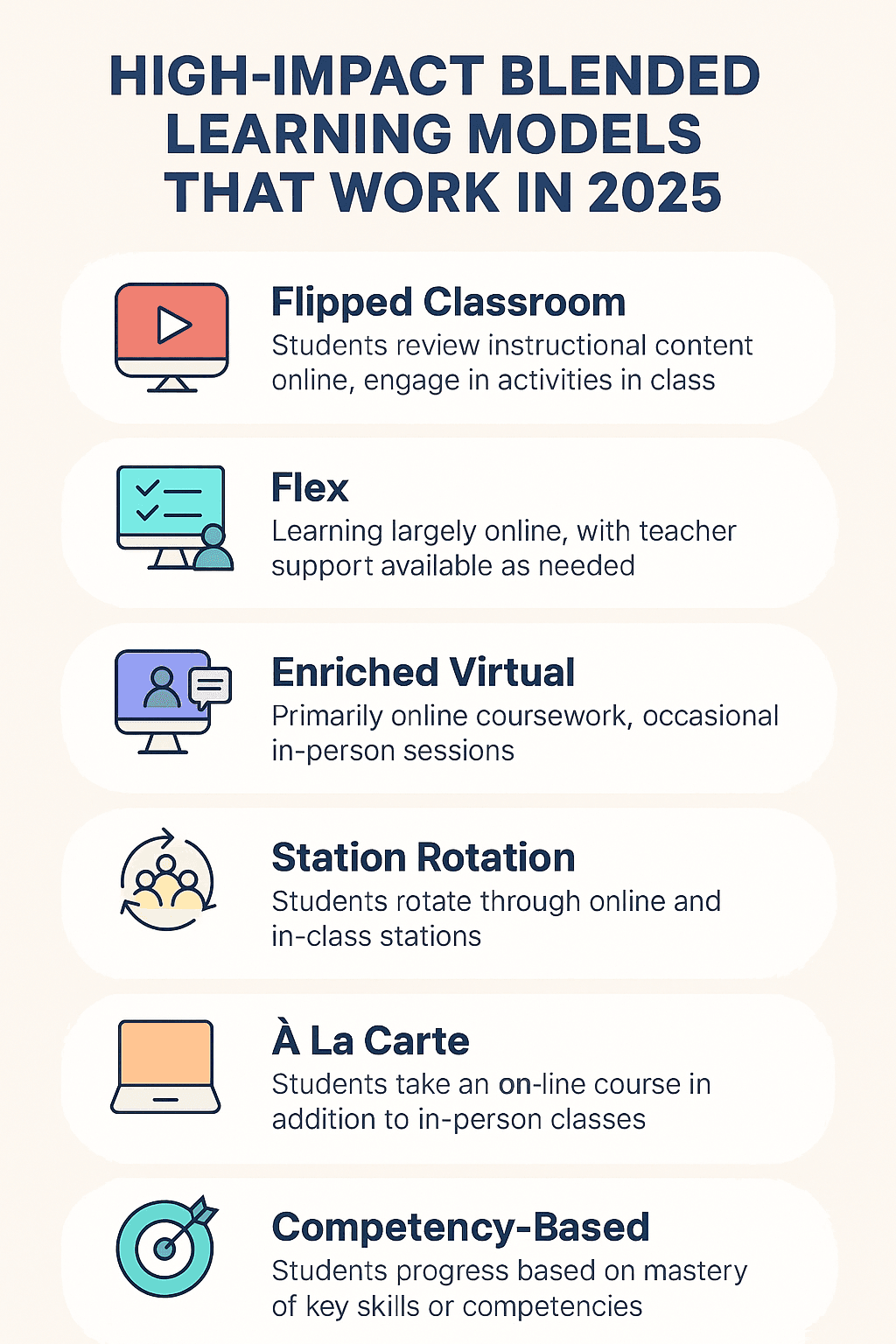The year 2025 has brought a new level of maturity and innovation to the world of blended learning. Driven by advances in educational technology and evolving learner expectations, institutions are embracing blended learning models that work in 2025—models that combine the best of face-to-face instruction with digital learning experiences.
This article explores the top blended learning models currently making a difference across schools, universities, and corporate training programmes, along with practical examples and implementation tips.
The Power of Case Studies in Consumer Behaviour Analysis
What Is Blended Learning in 2025?
Blended learning in 2025 is no longer a simple combination of classroom and online activities. It now reflects:
- Data-driven personalisation
- Seamless technology integration
- Flexible, learner-led environments
- A focus on engagement, equity, and outcomes
The best models prioritise accessibility, autonomy, and active learning, giving learners the freedom to engage at their own pace while still benefiting from collaborative, guided experiences.
1. The Flipped Classroom Model
Overview:
The flipped classroom reverses the traditional learning sequence. Students engage with instructional content (videos, readings, simulations) before class, freeing up in-class time for discussions, problem-solving, and collaborative projects.
Why it works in 2025:
- AI-curated video content is more accessible
- Pre-class analytics help instructors tailor in-class interventions
- Encourages active engagement and deeper learning
Example:
A biology lecturer assigns AI-personalised video modules on genetics for homework. During class, students work in small groups to solve genetic mutation case studies, with the instructor circulating to guide discussions.
2. The Flex Model
Overview:
In the Flex model, digital learning is the backbone, with in-person instruction used as needed. Students have significant control over time, pace, and learning paths.
Why it works in 2025:
- Adaptive learning platforms can personalise pathways in real time
- Learners receive individualised support based on progress data
- Ideal for diverse learners, especially in adult education and remote areas
Example:
A coding bootcamp allows learners to complete 80% of their content online, supported by weekly one-on-one coaching sessions and monthly in-person workshops.
3. The Enriched Virtual Model
Overview:
This model blends substantial online coursework with occasional face-to-face sessions. Unlike traditional online learning, it ensures ongoing contact with instructors and peers.
Why it works in 2025:
- Suits learners with time constraints or geographic barriers
- Enhances digital fluency and autonomy
- Supports lifelong learning and re-skilling
Example:
A university MBA programme offers asynchronous modules on marketing analytics and hosts biweekly virtual live sessions, plus quarterly campus meetups.
4. The Station Rotation Model
Overview:
Learners rotate through multiple stations that may include teacher-led instruction, online learning, and collaborative group tasks within a single class period.
Why it works in 2025:
- Supports diverse learning styles and group dynamics
- Encourages peer interaction and active learning
- Easily integrated into schools and training centres
Example:
In a secondary school English class, students rotate between a grammar lesson with the teacher, an AI grammar game on tablets, and a peer-review writing station.
5. The A La Carte Model
Overview:
Learners take one or more courses online while attending others in person. This model offers flexibility and specialisation opportunities.
Why it works in 2025:
- Meets student demand for schedule flexibility
- Expands access to niche subjects and global faculty
- Combines academic freedom with institutional support
Example:
A high school student completes their regular curriculum on campus but takes an online elective in environmental economics taught by a professor in another country.
6. Competency-Based Blended Learning
Overview:
This model allows learners to progress through course content based on mastery, not seat time. Digital tools assess readiness and suggest targeted interventions.
Why it works in 2025:
- Customised learning experiences
- Ensures mastery before progression
- Supported by robust AI diagnostics and dashboards
Example:
In a corporate leadership programme, participants complete modules at their own pace. AI identifies skill gaps and directs them to short, personalised learning paths.
Implementation Tips for 2025
- Use AI to personalise pathways and support learners proactively
- Ensure equity by addressing digital access, neurodiversity, and learning needs
- Train educators in digital pedagogy and data literacy
- Balance synchronous and asynchronous components for flexibility and structure
- Measure outcomes to inform continuous improvement
Conclusion
The most successful blended learning models that work in 2025 are those that are intentional, inclusive, and adaptable. Whether you are designing for a university course, professional training, or school curriculum, selecting the right model depends on your learners’ needs, your institutional goals, and the resources available.
As technology continues to advance, blended learning is not just an emergency solution—it is an opportunity to reimagine education for long-term success.
Visit The Case HQ for 95+ courses
Read More:
Understanding the Importance of Case Studies in Modern Education
How to Write a Compelling Case Study: A Step-by-Step Guide
The Role of Research Publications in Shaping Business Strategies
The Impact of Real-World Scenarios in Business Education
The Power of Field Case Studies in Understanding Real-World Businesses
Compact Case Studies: The Bite-Sized Learning Revolution
Utilizing Published Sources in Case Study Research: Advantages and Pitfalls
Leveraging Case Studies for Business Strategy Development
Unraveling the Mystery of Case Studies in Psychology
The Role of Case Studies in Environmental Impact Assessments
Why Research Publications are Critical in Understanding Global Health Trends



Responses